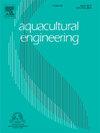生成性人工智能在水产养殖领域的应用
IF 4.3
2区 农林科学
Q2 AGRICULTURAL ENGINEERING
引用次数: 0
摘要
人工智能(AI)在水产养殖中的应用最近引起了越来越多的关注,因为这些技术对数据分析、改进生产过程和优化自然资源利用至关重要。在不同的人工智能方法中,生成式人工智能(GAI)是最具创新性和前景的方法之一。本文探讨了生成式人工智能(GAI)在水产养殖中的应用,并在该行业的独特背景下评估了其优势和挑战。它从生成模型架构的概述开始,然后深入研究它们对水生资源管理的潜在贡献,农业实践的改进,以及促进环境可持续性。为了获得最新的见解,研究使用了SCOPUS、b谷歌Scholar和Web of Science数据库等数据库。GAI对水产养殖具有重要的前景,其应用包括增强水质管理,鱼类种群健康预测和自动饲养监督。如果负责任地加以应用,GAI可以简化日常操作,同时为水产养殖业建立一个更具弹性和可持续性的未来做出贡献。凭借其从大数据中提取有价值见解的能力,GAI被证明是应对未来挑战的强大工具,确保粮食生产满足不断增长的全球人口的需求,同时解决日益紧迫的环境问题。本文章由计算机程序翻译,如有差异,请以英文原文为准。
Application of generative artificial intelligence in the aquacultural sector
Artificial Intelligence (AI) applications in aquaculture have recently attracted growing attention, as these technologies are becoming vital for data analysis, improving production processes, and optimizing the use of natural resources. Among the different AI approaches, Generative Artificial Intelligence (GAI) emerges as one of the most innovative and promising.This paper explores the use of Generative Artificial Intelligence (GAI) in aquaculture, evaluating its advantages and challenges within the industry's unique context. It begins with an overview of generative model architectures, then delves into their potential contributions to aquatic resource management, the improvement of farming practices, and the promotion of environmental sustainability.To obtain the most up-to-date insights, research was carried out using database such as SCOPUS, Google Scholar, and Web of Science databases. GAI holds significant promise for aquaculture, with applications that include enhanced water quality management, fish stock health prediction, and automated feeding supervision. When applied responsibly, GAI can streamline routine operations while contributing to a more resilient and sustainable future for the aquaculture industry. With its ability to extract valuable insights from big data, GAI proves to be a powerful tool for tackling future challenges, ensuring food production that meets the demands of a growing global population while addressing increasingly urgent environmental concerns.
求助全文
通过发布文献求助,成功后即可免费获取论文全文。
去求助
来源期刊

Aquacultural Engineering
农林科学-农业工程
CiteScore
8.60
自引率
10.00%
发文量
63
审稿时长
>24 weeks
期刊介绍:
Aquacultural Engineering is concerned with the design and development of effective aquacultural systems for marine and freshwater facilities. The journal aims to apply the knowledge gained from basic research which potentially can be translated into commercial operations.
Problems of scale-up and application of research data involve many parameters, both physical and biological, making it difficult to anticipate the interaction between the unit processes and the cultured animals. Aquacultural Engineering aims to develop this bioengineering interface for aquaculture and welcomes contributions in the following areas:
– Engineering and design of aquaculture facilities
– Engineering-based research studies
– Construction experience and techniques
– In-service experience, commissioning, operation
– Materials selection and their uses
– Quantification of biological data and constraints
 求助内容:
求助内容: 应助结果提醒方式:
应助结果提醒方式:


